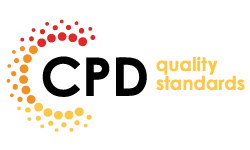The [course_title] course illustrates the techniques of applying the material design principles to your apps. Material design principles define Android’s visual language, and in the course, you learn the strategies for using it to your app.
The course includes Android design fundamentals that will be followed by the techniques of transforming design elements of sample apps.
Upon completion, you will gain a solid understanding of the process of creating and using material design elements, surfaces, transitions and graphics in your app.
Assessment
This course does not involve any written exams. Students need to answer 5 assignment questions to complete the course, the answers will be in the form of written work in pdf or word. Students can write the answers in their own time. Each answer needs to be 200 words (1 Page). Once the answers are submitted, the tutor will check and assess the work.
Certification
Edukite courses are free to study. To successfully complete a course you must submit all the assignment of the course as part of the assessment. Upon successful completion of a course, you can choose to make your achievement formal by obtaining your Certificate at a cost of £49.
Having an Official Edukite Certification is a great way to celebrate and share your success. You can:
- Add the certificate to your CV or resume and brighten up your career
- Show it to prove your success
Course Credit: Udacity
Course Curriculum
| Lesson 1: Android Design Fundamentals | |||
| Introduction | 00:01:00 | ||
| Physical and Density Independent Pixels | 00:02:00 | ||
| Working with Density Independent Pixels | 00:01:00 | ||
| More about Pixel Densities | 00:01:00 | ||
| Calculating Dips | 00:01:00 | ||
| Small Screens First | 00:01:00 | ||
| Density buckets | 00:01:00 | ||
| Density for Asset Crispness | 00:01:00 | ||
| Vector vs Bitmap | 00:02:00 | ||
| Dissecting the Resource Qualifier | 00:02:00 | ||
| State Lists | 00:02:00 | ||
| Layouts | 00:01:00 | ||
| Getting Started with Layouts | 00:02:00 | ||
| All about layouts | 00:02:00 | ||
| Identifying Layouts | 00:04:00 | ||
| Common Design Patterns | 00:06:00 | ||
| Thinking about Entities | 00:01:00 | ||
| Introduction to Themes and Styles | 00:01:00 | ||
| Adding a style | 00:02:00 | ||
| Lesson 2: Constraint Layout | |||
| Introduction | 00:01:00 | ||
| The Android View Rendering Cycle | 00:02:00 | ||
| How Double Taxation Affects Views | 00:01:00 | ||
| What is ConstraintLayout? | 00:01:00 | ||
| The New Layout Editor | 00:01:00 | ||
| Adding and Removing Constraints | 00:01:00 | ||
| Understanding the New Attributes View | 00:02:00 | ||
| Managing Space with Chains | 00:03:00 | ||
| Virtual Helper Objects | 00:02:00 | ||
| Conclusion | 00:01:00 | ||
| Lesson 3: Surfaces | |||
| Overview Paper and Ink | 00:01:00 | ||
| Tangibility | 00:01:00 | ||
| Introduction to Surfaces | 00:02:00 | ||
| Using Surfaces | 00:01:00 | ||
| Implementing Surfaces | 00:02:00 | ||
| Making Surfaces | 00:01:00 | ||
| What is a Fab | 00:02:00 | ||
| Adding a FAB | 00:03:00 | ||
| Surface Reaction | 00:01:00 | ||
| Adding Ripple/Surface Elevation to a FAB | 00:03:00 | ||
| Transforming Paper | 00:01:00 | ||
| Creating Paper Transformations | 00:02:00 | ||
| Responding to Scroll Events | 00:03:00 | ||
| Making Scrollable Dynamic Surfaces | 00:02:00 | ||
| The Google Logo | 00:01:00 | ||
| Lesson 4: Bold Graphic Design | |||
| Introduction | 00:01:00 | ||
| Gestalt Primer Continues | 00:02:00 | ||
| Grids and Keylines | 00:02:00 | ||
| Metrics | 00:02:00 | ||
| Introducing Color and the Material Design Palette | 00:01:00 | ||
| Using Color | 00:03:00 | ||
| Applying a Color Palette | 00:02:00 | ||
| Picking a Palette From an Image | 00:02:00 | ||
| All About Typography | 00:01:00 | ||
| Scale Independent Pixels | 00:01:00 | ||
| Font Characteristics | 00:03:00 | ||
| Font Weight and Style | 00:02:00 | ||
| How to Pick Fonts | 00:03:00 | ||
| Adding a Custom Font | 00:02:00 | ||
| All About Images | 00:01:00 | ||
| Using imagery | 00:04:00 | ||
| Making Images More Immersive | 00:03:00 | ||
| Circular Avatars | 00:01:00 | ||
| Aspect Ratio Images | 00:02:00 | ||
| Background Protection | 00:02:00 | ||
| Lesson 5: Meaningful Motion | |||
| Introduction | 00:01:00 | ||
| Animation on Android | 00:03:00 | ||
| Introduction to Transition Manager | 00:02:00 | ||
| Newer Animation APIs | 00:02:00 | ||
| Activity and Fragment Transitions in Lollipop | 00:02:00 | ||
| Activity Enter and Exit | 00:06:00 | ||
| Continuous State Changes | 00:02:00 | ||
| Explaining Shared Element Transitions | 00:02:00 | ||
| Implementing Shared Element Transitions | 00:02:00 | ||
| Instructive Motion | 00:02:00 | ||
| Implementing Instructive Motion | 00:02:00 | ||
| Design to Enhance | 00:03:00 | ||
| Interpolating | 00:02:00 | ||
| Coordinated Motion | 00:02:00 | ||
| Delightful Details | 00:01:00 | ||
| Introduction to AnimatedVectorDrawables | 00:03:00 | ||
| Implementing AnimatedVectorDrawables | 00:02:00 | ||
| Lesson 6: Adaptive Design | |||
| Introduction | 00:01:00 | ||
| Problem Statement | 00:01:00 | ||
| Examples of Non Optimal Tablet UIs | 00:03:00 | ||
| Breakpoints and Content First | 00:03:00 | ||
| How to implement breakpoints | 00:02:00 | ||
| Techniques for Managing Space | 00:03:00 | ||
| What to vary at your Breakpoints | 00:02:00 | ||
| What to Vary Part 2 | 00:03:00 | ||
| What to Vary Part 3 | 00:02:00 | ||
| Newly Optimized Tablet UIs | 00:02:00 | ||
| Testing Validation | 00:01:00 | ||
| Course Outro | 00:01:00 | ||
| Assessment | |||
| Submit Your Assignment | 00:00:00 | ||
| Certification | 00:00:00 | ||
Course Reviews
No Reviews found for this course.





